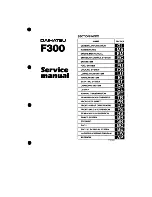
Standard
STD 101-0001
Volvo Group
Version
4
Page
23
c) Theoretically exact dimensions should be placed in annotation planes that are parallel with one of the
planes of the absolute or a user-defined model co-ordinate system. An example of an exception is the 3x15
basic dimension shown in figure 19.
d) Theoretically exact dimensions defining surface curvature or extent, such as fillets, rounds or chamfers,
shall be directed to the feature surface by a leader line, see figure 19.
e) Theoretically exact dimensions defining linear distance or angular relation are shown using dimension and
extension lines, see figure 19.
3x
1
5
(=
45
)
Figure 19 – Placement and attachment for theoretically exact dimensions
4.5.3.2 Size values
A size value shall not conflict with a queried model value for the same feature when the model value is rounded to
the same number of decimal places. This agreement shall meet one of the following requirements, depending on
the tolerance expression used.
For bilateral or unilateral tolerances, the displayed size value shall equal the resolved model value.
For size values, the placement and attachment methods for size dimensions are as follows:
•
Spherical surface: the size value, leader line or dimension and extension lines shall be placed on an
annotation plane containing the model feature centre-point.
•
Cylindrical surface: the size value, leader line or dimension and extension lines shall be placed on an
annotation plane perpendicular to the model feature axis or containing the model feature axis.
•
Set of two opposed parallel surfaces (a width): the size value, dimension, and extension lines shall be
placed on an annotation plane perpendicular to, or containing, the feature centre plane; the extension lines
shall clearly indicate the surfaces comprising the width, see figure 20 for examples.














































